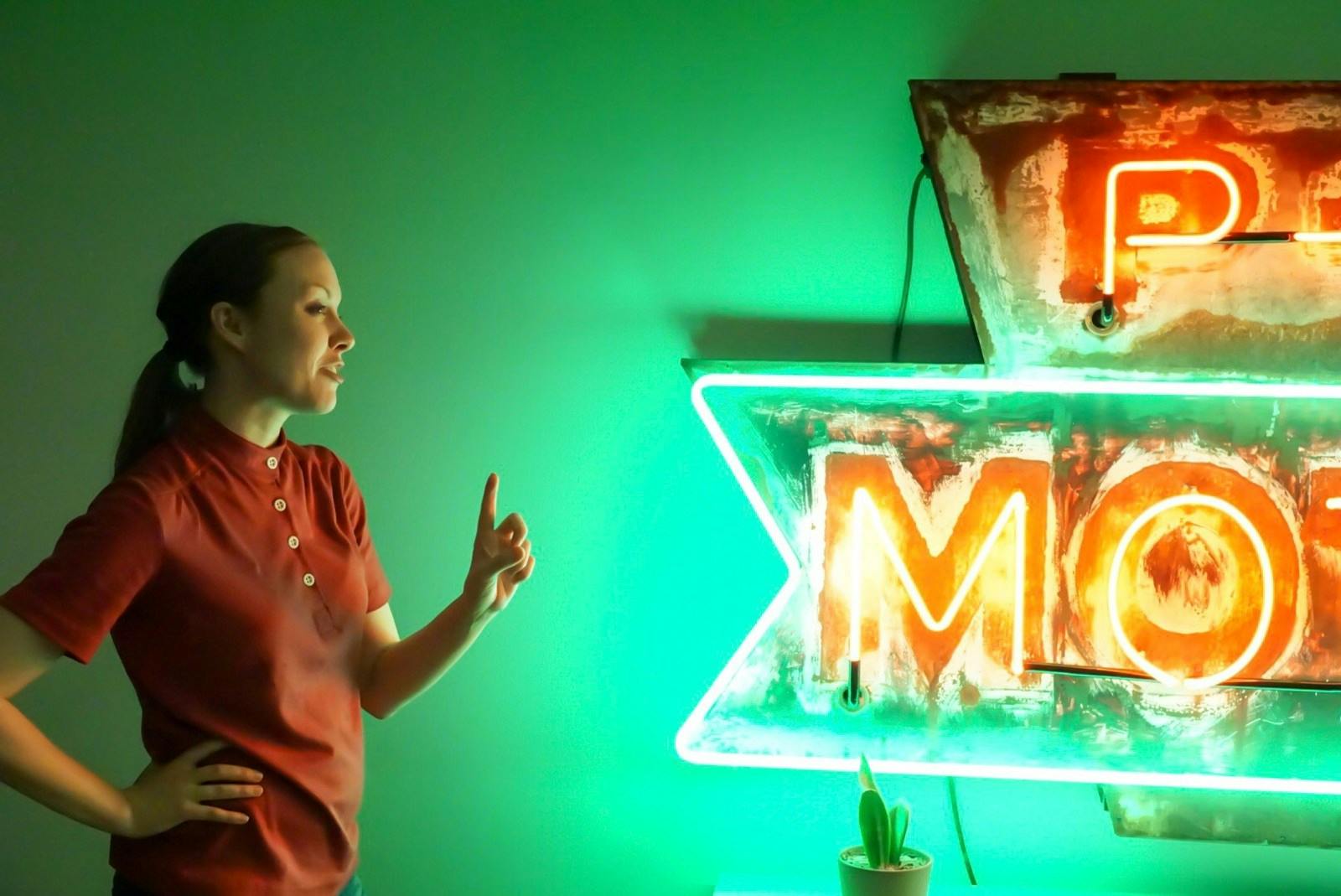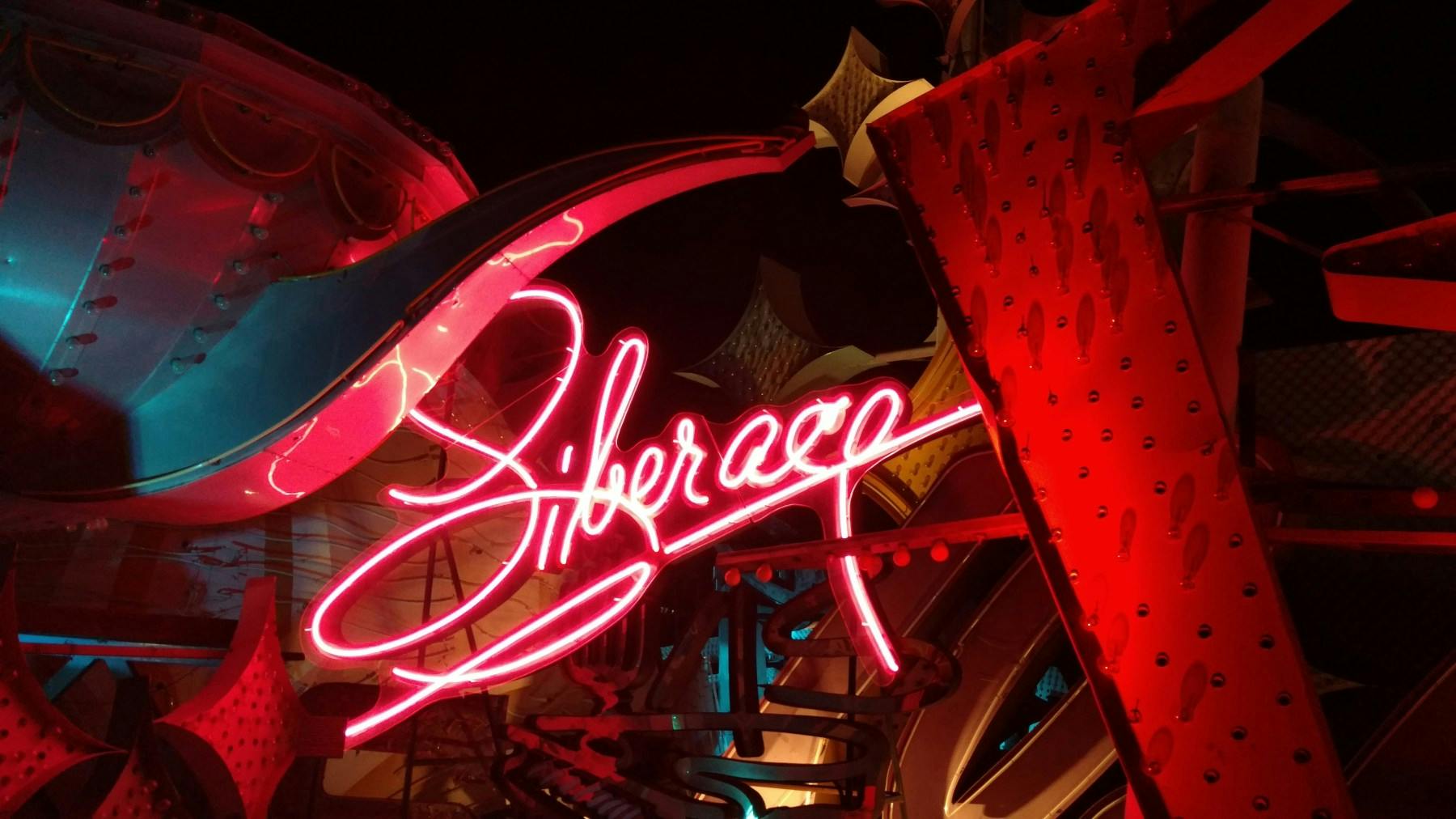She’s Always Buzzing Just Like Neon, Neon
“This is a roadside attraction,” said Wednesday. “One of the finest. Which means it is a place of power.”
“Come again?”
“It’s perfectly simple,” said Wednesday. “In other countries, over the years, people recognized the places of power… They knew that something important was happening there, that there was some focusing point, some channel, some window to the Immanent. And so they would build temples or cathedrals, or erect stone circles, or… well, you get the idea.
In the USA, people still get the call, or some of them, and they feel themselves being called to from the transcendent void, and they respond to it by building a model out of beer bottles of somewhere they’ve never visited, or by erecting a gigantic bat house in some part of the country that bats have traditionally declined to visit. Roadside attractions: people feel themselves being pulled to places where, in other parts of the world, they would recognize that part of themselves that is truly transcendent.”
—American Gods, Neil Gaiman
There are few things I love like vintage neon. It’s the culmination of all the stuff that feeds my soul: road trips, the American West, memorable design, cool factor, being very much over the top, night driving, old Vegas, the mystery of roadside motels and bizarre attractions. (Or, the transcendent places we have otherwise failed to recognize—at least according to Neil Gaiman. But I buy it.)
Neon signs buzz and flicker with unpredictable energy. They attracted the travelers of a new driving America in the 40s, 50s and 60s when family cars and road trips first became our birthright. They pointed us to hot coffee, grand adventures, crazy vibrating motel beds and color TVs.
There’s a long-standing clash between art and design, mostly about which is which, or whether they’re the same. While I don’t care if we ever agree, I draw a clear distinction: I am most definitely a designer. I am not an artist. I am not angst-y enough to be an artist, which means I am left solving problems that belong to otherpeople rather than expressing my own. That’s the truth about design—it’s solving problems for other people (or causes, or orgs, or businesses).
Back in the day when people were suddenly able to cruise right by roadside businesses in a giant Chevy, it left a lot of shops in the dust. “Shoot, Carl. They’re flyin’ right by us on that highway! They’ve probably passed a half-dozen motels just tonight. What are we gonna do?”
And a bunch of designers of the day stepped in with the solution to just simply be WAY MORE VISIBLE.
We’re thinking a sign with 1,800 flashing bulbs and neon in ten colors, with moving legs, and a horse, and maybe 12 pylons and a giant arrow. Oh, a sculpture of a shoe? Sure, that too.
And suddenly, BAM, we’ve got this uniquely American signage because we just couldn’t slow down, and a bunch of people got creative about it. And then we became a nation of moths, of restless travelers drawn to the light of things we used to speed past. And it’s all because of our neons. They helped Mom-and-Pops. They helped build our driving culture. They solved a problem in the most amazing, ridiculous, over-the-top, lit-on-fire sort of way.
Transcendent.
Did you know that you can benefit the Las Vegas Neon Museum every time you shop on Amazon at no added cost to you? Yep, Jeff Bezos <3s Vegas. Visit smile.amazon.com and select “Neon Museum.” Please.
ALSO, if you know of a neon being taken down, save it from a dumpster and let me know about it. I have a guy, as they say.


